Information delivery facilitation
Generative AI has a huge potential when it comes to automating the delivery of information. Let’s take for example the Information Strategy course from the Business Information Management master’s degree at the Rotterdam School of Management. This course is divided into 8 chapters, each of which has accompanying videos and recommended readings. In a given chapter, there are certain key concepts that a student must understand. The student must understand both the theoretical underpinning of a concept as well as how to apply that concept to the real world. Although applying a theoretical concept to a real life example can be a complex process that is best guided through by a knowledgeable and experienced teacher, the theory itself can be facilitated through AI-generated videos.
AI Script Generation Software – Maekersuite
For example, take disruptive innovation as a specific concept. A script for a 3-minute video explaining the concept could be created by the professor or a teaching assistant with the aid of ChatGPT. Maekersuite, a generative AI powered script writing software, only requires a prompt such as “Explain disruptive innovation as based on Clayton Christensen’s HBR article” and specifying a video length and target audience to create an engaging and scientifically accurate script. A script outline is first generated which already contains all the information and can be edited before generating the script itself.
Input
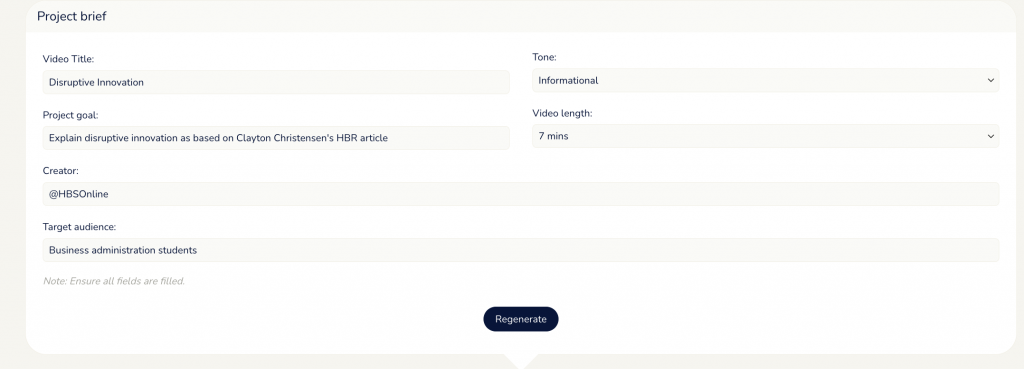
Part of script outline
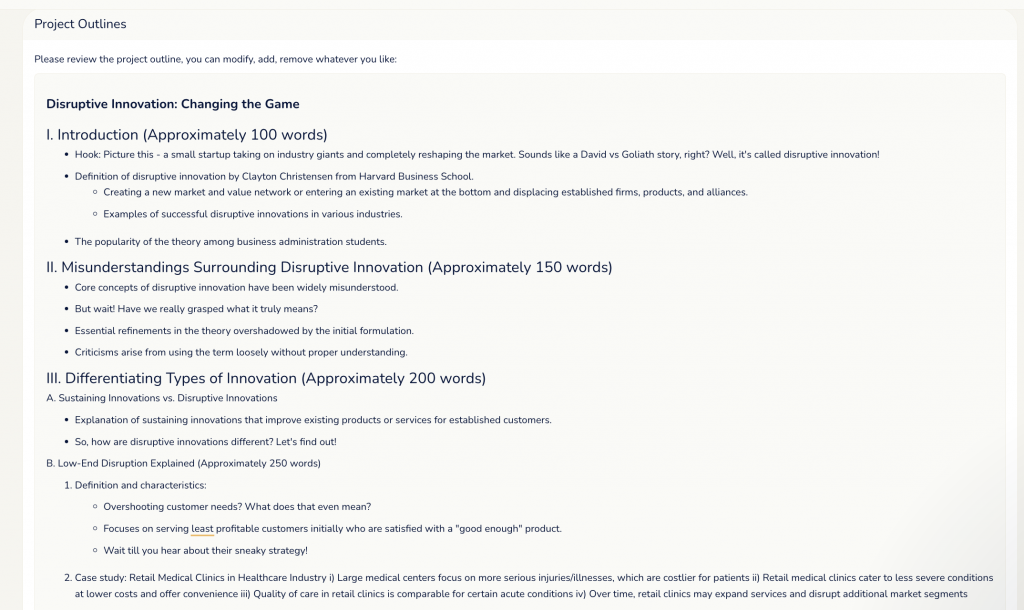
Script output
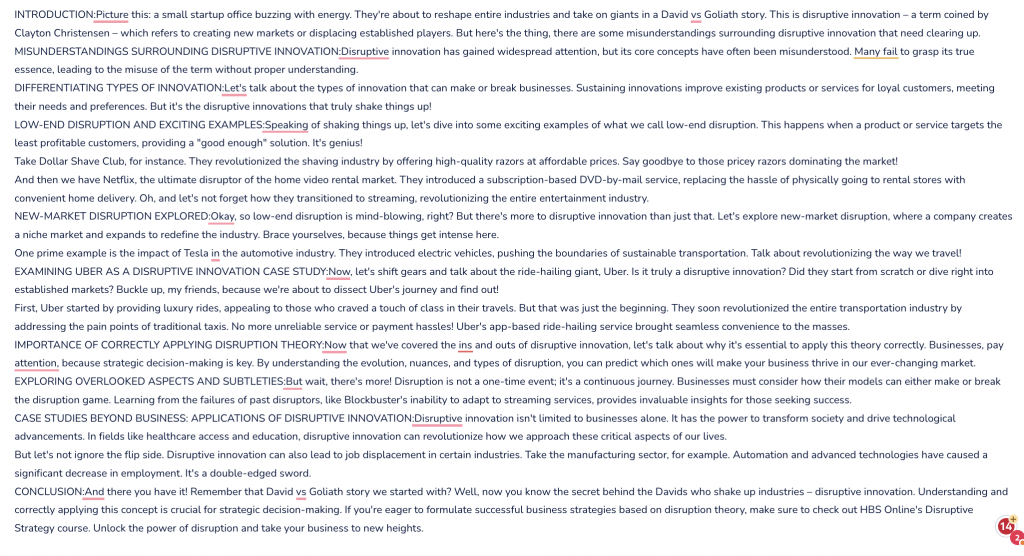
AI Video Generation Software – Pictory & HourOne
This text input, the script from Maekersuite, can then be sent to AI video creation software such as Pictory. Pictory can then generate a video where it assigns random backgrounds relevant to the topic and applies an AI voice to read the text input. However, the separation in scenes cannot be precisely specified by the user, which results in imprecise spacing of the content throughout the video. Furthermore, the backgrounds can often be irrelevant. Most likely, Pictory is better to be used for artistic videos rather than videos focused on explaining concepts.
Images from resulting Pictory video
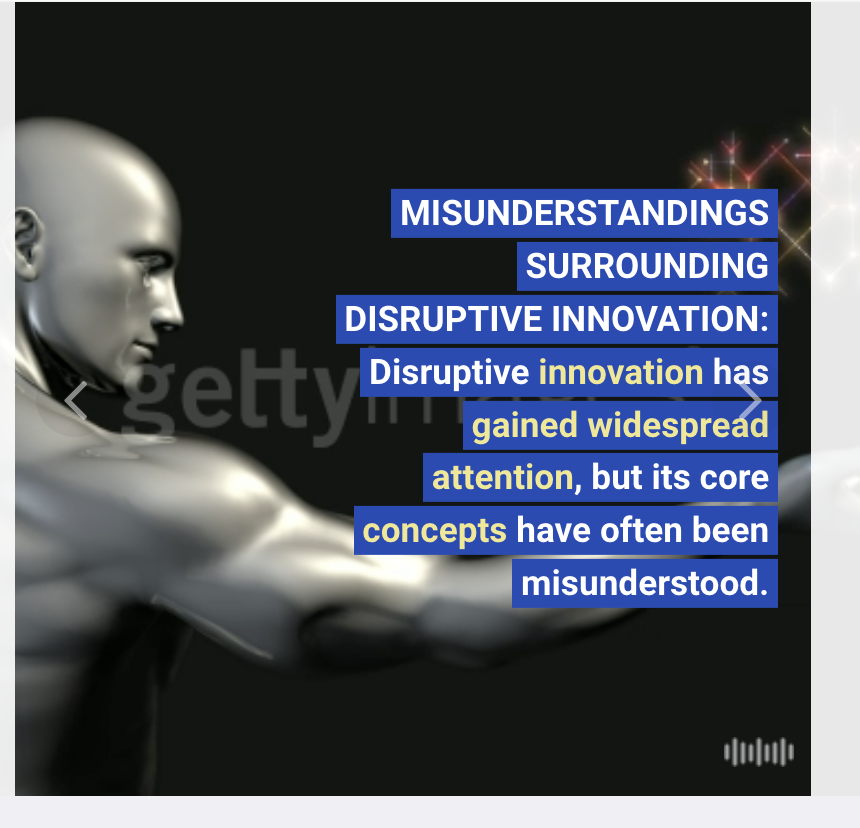
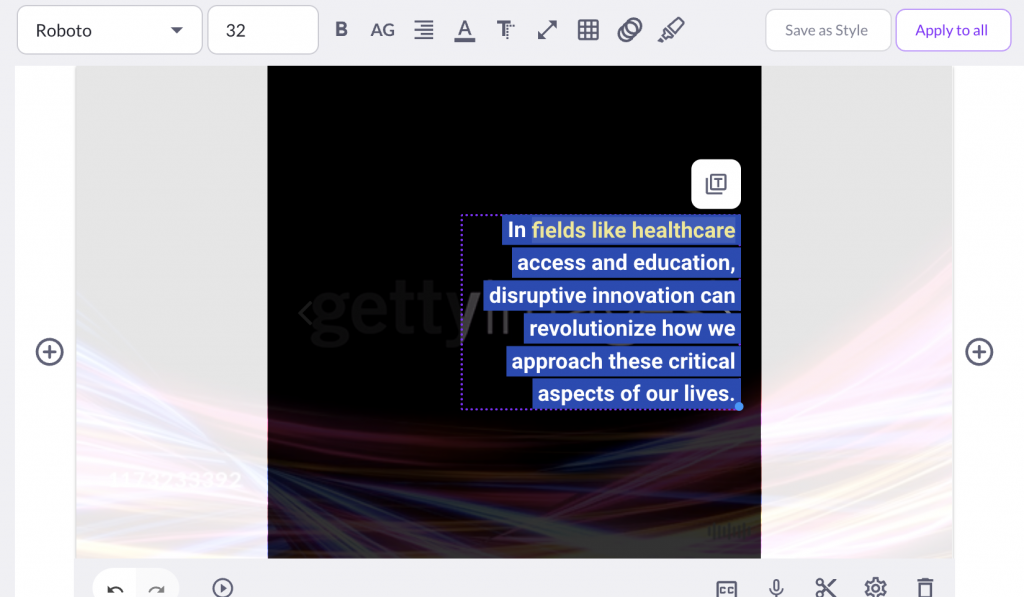
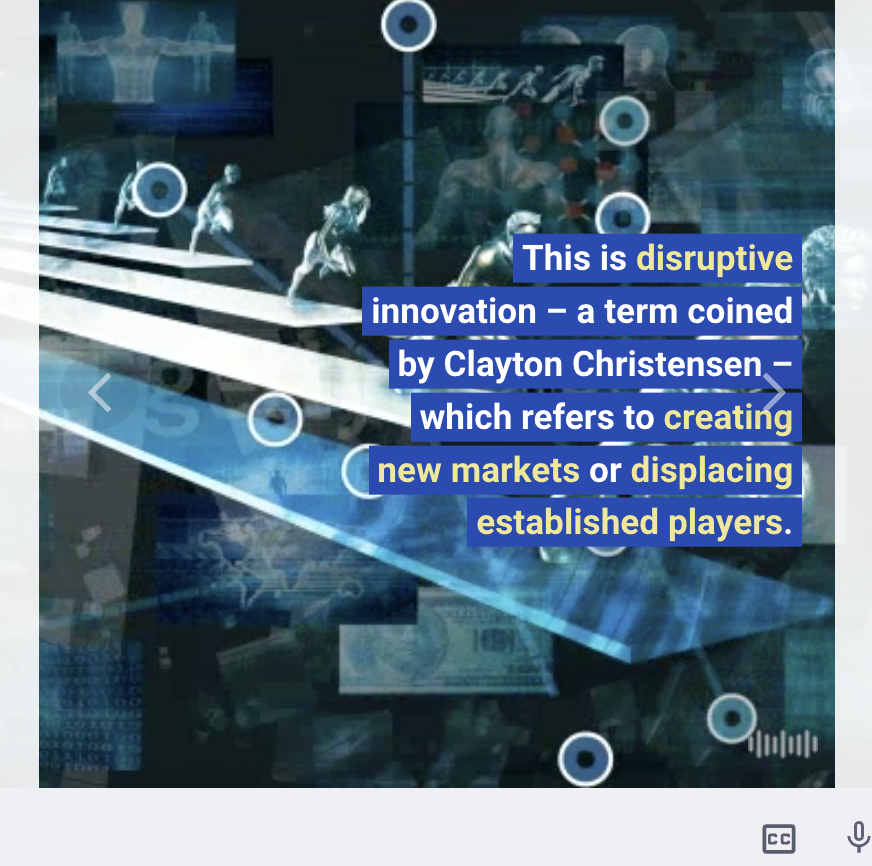
HourOne was much better in that regard, since it is an AI video generator specialised in presentations. If the ChatGPT-generated text is simply posted as an input then an automated presenter video can be generated with a presenter that can be chosen by the user out of an available selection. Furthermore, HourOne offers a mobile app through which the user can record themselves standing still for 5 seconds and then a virtual version of the user is generated that can then be used for the videos. However, this feature is currently limited and not as versatile as the built-in presenter options since it is not compatible with as many templates, and even when it is compatible, the visibility of the virtual avatar is limited. That being said, the option to add a familiar face to the viewers can make a video seem friendlier.
Presenters available
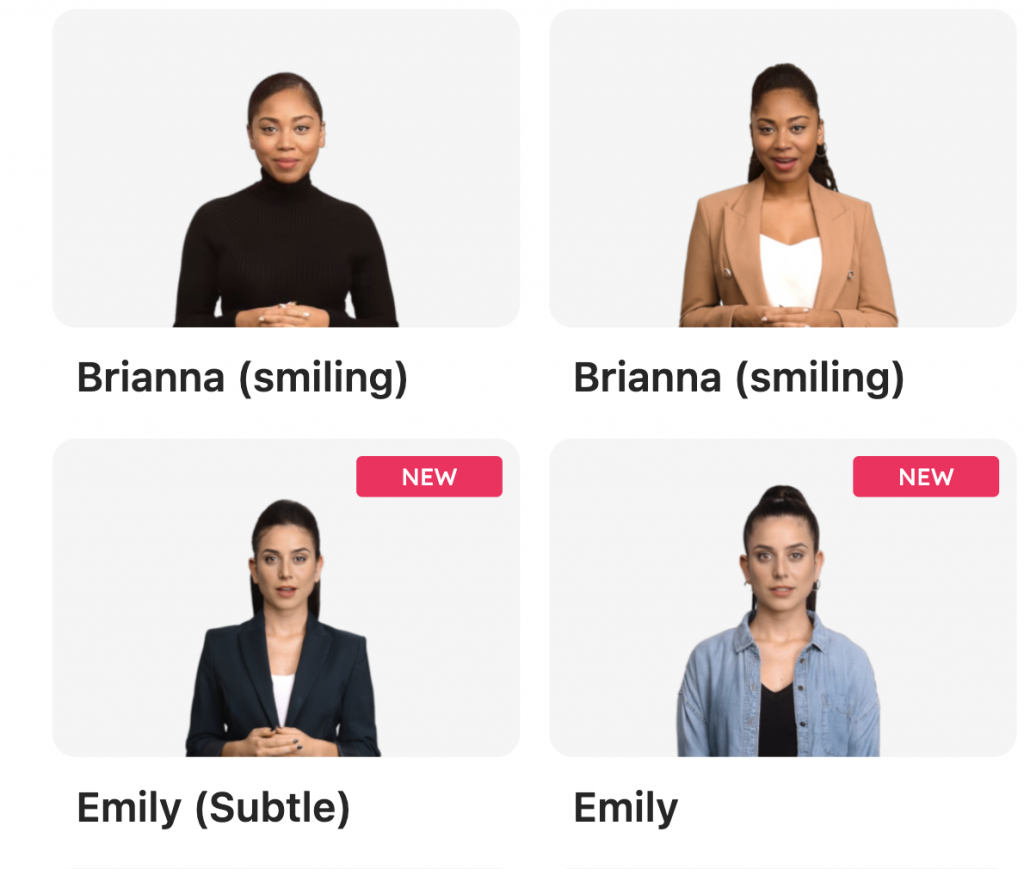
Myself as a virtual presenter, including fitting into templates

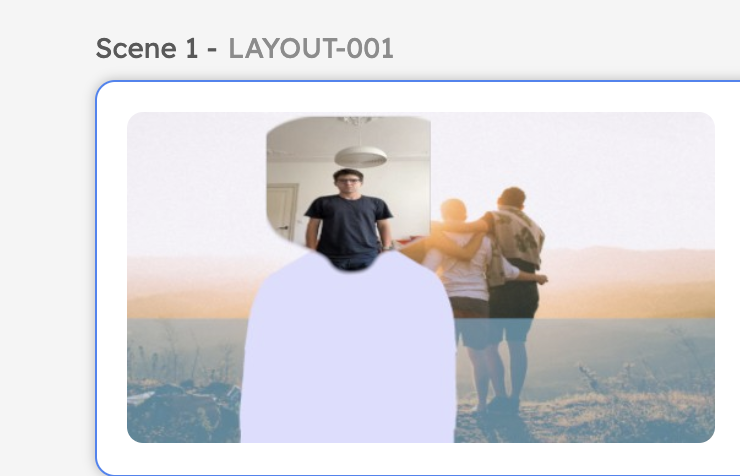

Conclusion
If coupled with specialised human input, script generation and video creation software can go quite far, but it is still very far from reaching a level that is comparable from a quality standpoint to the current videos that are delivered by professors as course support in an online educational platform. In my view, a perfect product would be a mix of improved versions of Pictory and HourOne, generating relevant background images to illustrate concepts, while maintaining a virtual presenter that is based on the actual content creator rather than preset options.
